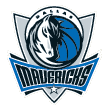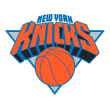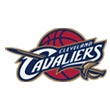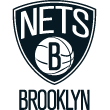Grades: Chandler back in Big D
The deal
Knicks get: Guards Jose Calderon, Wayne Ellington and Shane Larkin; center Samuel Dalembert; and the 34th and 51st picks in Thursday's draft.
Mavericks get: Center Tyson Chandler and guard Raymond Felton.
Dallas Mavericks: C+

Consider this the Mavericks hitting reset on recent offseasons. After winning the 2011 NBA championship and following the lockout that produced the current collective bargaining agreement, Dallas famously allowed Chandler to leave as a free agent rather than bringing back the defensive linchpin of the title-winning team.
After failing to translate the flexibility created by letting Chandler walk into a superstar, the Mavericks used their cap space last summer to sign a large group of free agents, including Calderon, Dalembert and Ellington. A year later, all three are headed out to make room for the center Dallas originally let get away.
The problem with the Mavericks' summer was the effect it had on the team's defense. With the undersized duo of Calderon and Monta Ellis in the backcourt, and the middling Dalembert as the team's best interior defender, Dallas ranked 22nd in the NBA in defensive rating -- worst of any playoff team. The porous D undermined a Dirk Nowitzki-led offense that was quite effective.
Both halves of this trade upgrade the Mavericks' defense. Though Chandler is no longer in his defensive player of the year prime, his size and positioning make him effective on the interior when properly motivated, something we didn't always see last season in New York. Even in a down season, however, Chandler had a more positive impact on his team's defense than Dalembert. He's a better defensive rebounder and fouls far less frequently (3.1 per 36 minutes as compared to 4.7).
On the perimeter, Felton has been an average defender for a point guard as measured by ESPN's Real Plus-Minus (-1.2 points per 100 possessions). That makes him a major upgrade on Calderon, one of the league's worst defenders by the same measure (-3.6 points per 100 possessions).
Even after taking on either $3 million or $5 million in additional salary (depending on whether Dalembert will be kept or waived, as his contract was only partially guaranteed), Dallas has ample cap room to make a splash in free agency. Assuming they immediately sign Nowitzki to a contract that reduces his cap hold, the Mavericks will have about $30 million minus Nowitzki's first-year salary available under the cap. Depending on how well they replace free agents Vince Carter and Shawn Marion (or whether they bring those players back), that could produce a better -- and more balanced -- team than last year's eighth-seeded group that gave the San Antonio Spurs their stiffest test of the postseason.
That's the optimistic view. Here's the downside. Remember, Dallas let Chandler go in large part to avoid this final season of his contract, when he'll make $14.6 million at age 32 while his athleticism is in decline. Chandler long has struggled with injuries, missing a combined 43 games over the last two seasons, and the Mavericks will have to hope one of the league's best athletic training staffs can keep him on the court as they did in 2010-11 (Chandler's 74 games that season were his highest total since 2007-08, though he did play all 66 after the lockout.)
So there's a risk that Chandler could suffer through another injury-plagued season, and leave Dallas little better on the court. In order to take that risk, the Mavericks surrendered a surprising number of assets -- Larkin, who was last year's first-round pick, and both of their second-rounders this year. They continue to attempt in vain to milk some playoff success out of Nowitzki's final NBA years. In that respect, this deal doesn't reflect a change of direction at all. It's more of the same in Dallas.
New York Knicks: B+

How strange it is to see a trade involving the Knicks where the young assets (Larkin and the second-round picks) are heading in their direction. It's unclear how much of a short-term hit they're taking in return. New York suffers the inverse of Dallas' improvement on defense, but Calderon's shooting will help space the floor. In the event Carmelo Anthony re-signs, Calderon would be a good complement on offense.
And if Anthony leaves? At that point, next season is a rebuilding one, and it's a no-brainer for the Knicks to add a promising point guard prospect and a pair of picks in a draft where they previously held none. Like nearly all his fellow rookies, Larkin struggled last season, and he's projected below replacement level in 2014-15. But similar players have tended to improve quickly, and by the end of his rookie contract SCHOENE projects Larkin as a two-win player -- a good backup point guard, essentially.
The biggest downside for the Knicks is taking on Calderon's long-term contract, which becomes their only guaranteed salary beyond 2016. Because Calderon makes more than Felton, New York adds more than $5 million in salary for the summer of 2015, when the team plans to go under the cap. But Calderon has value elsewhere, and if Anthony walks the Knicks will likely be able to trade him for an expiring contract that would allow them maximum 2015 cap flexibility.











